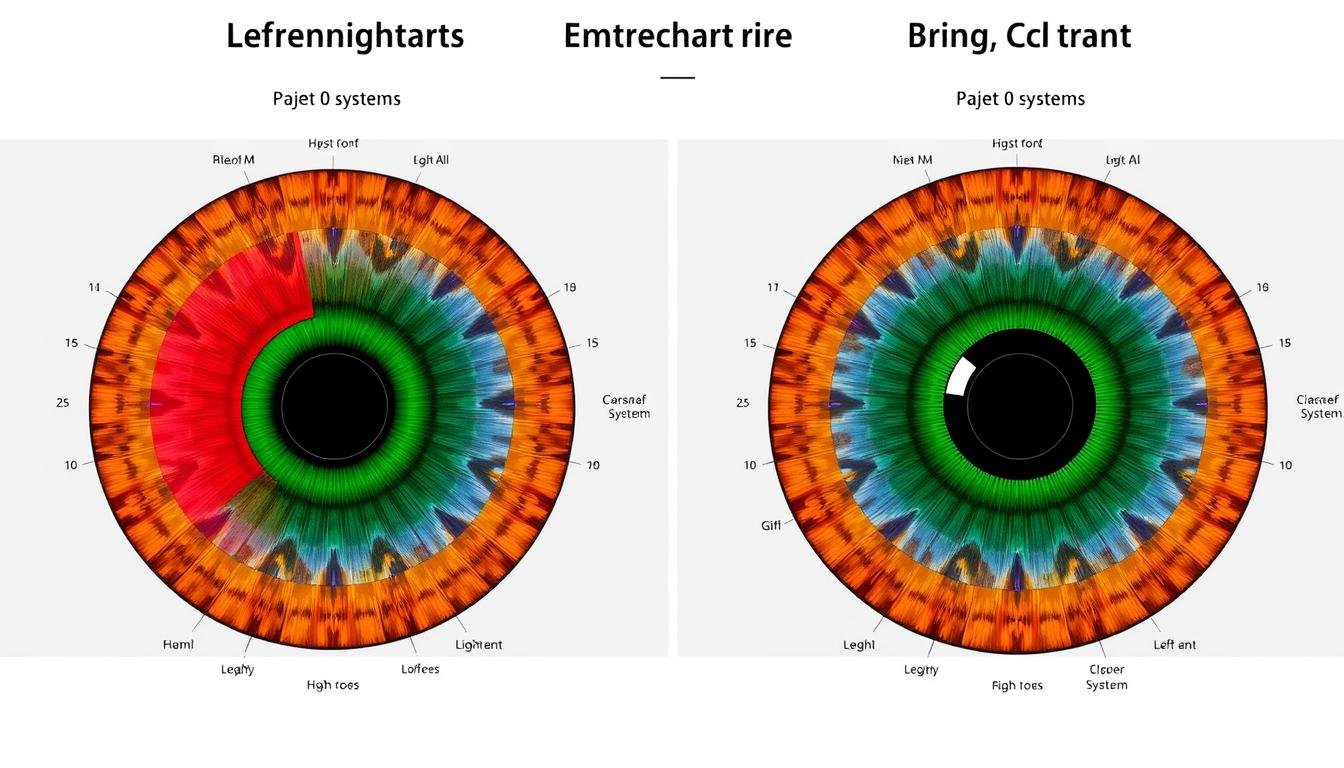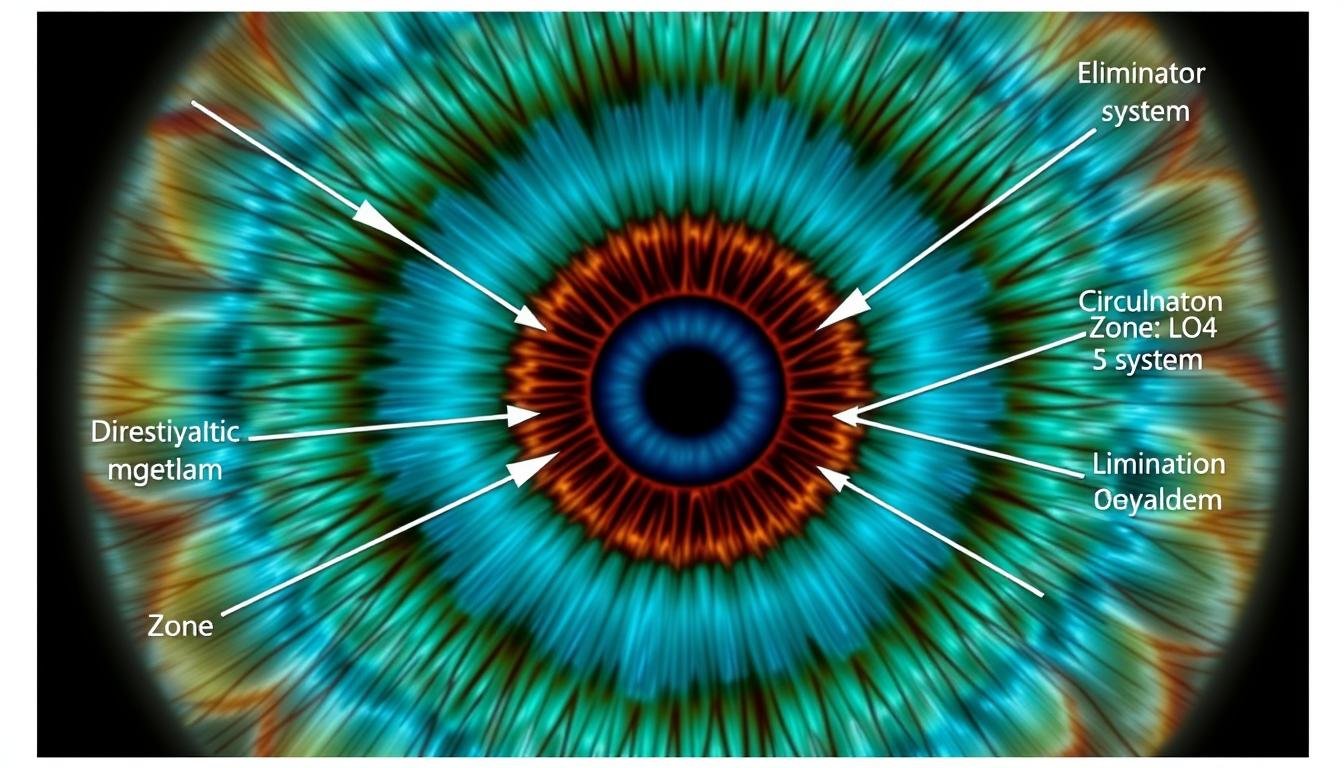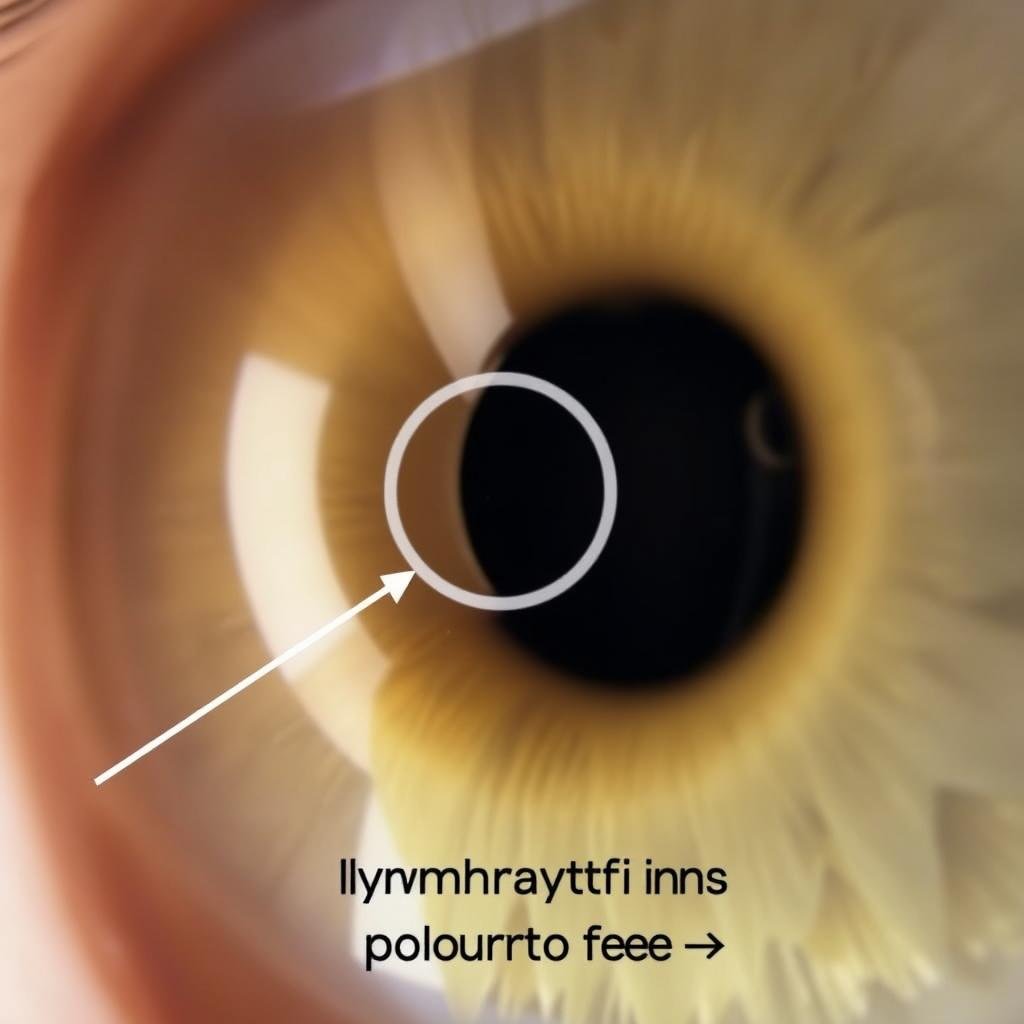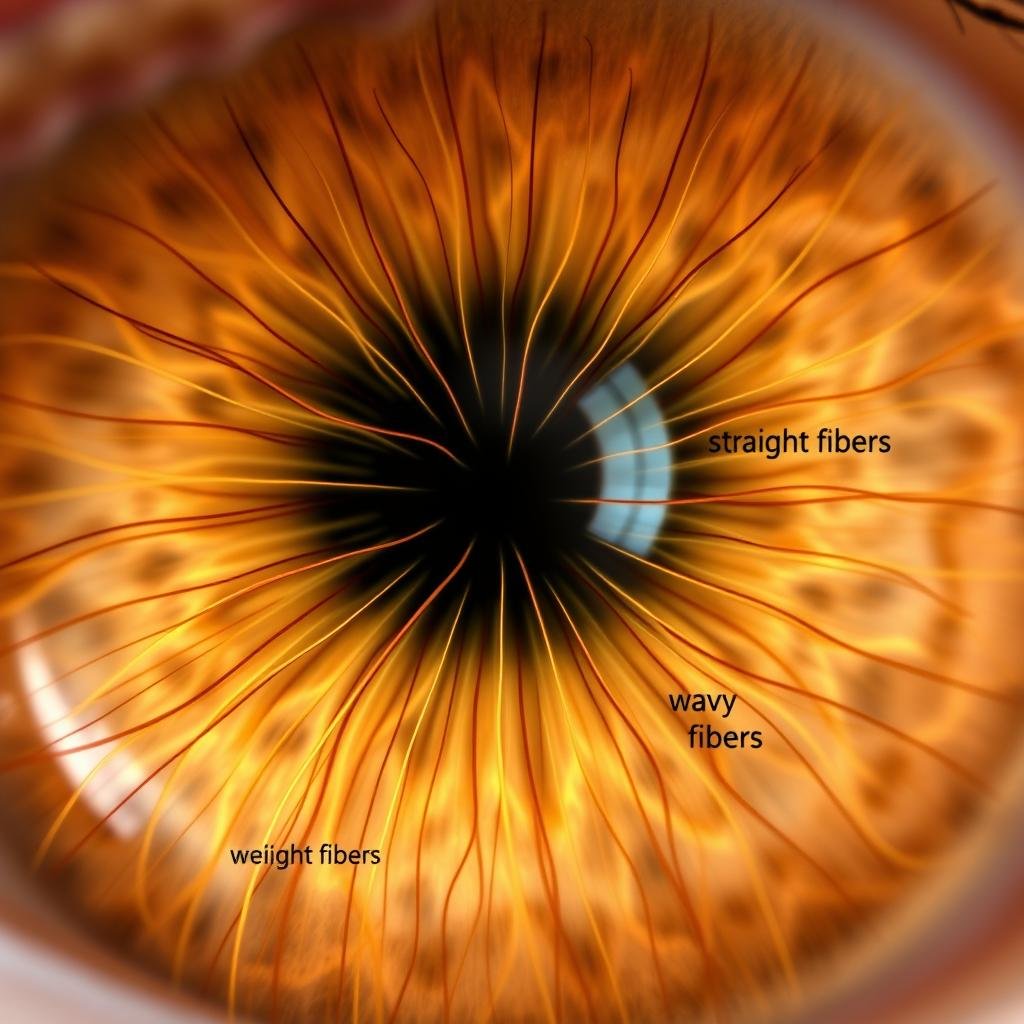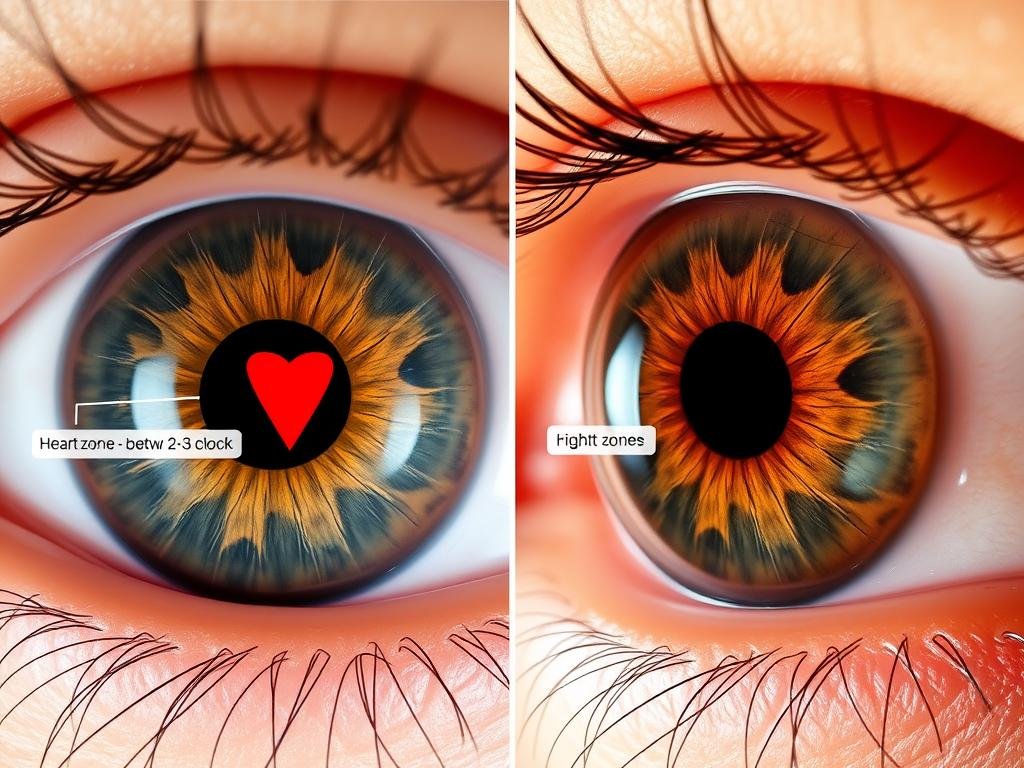The fascinating world of iridology opens a window into potential health insights through the careful examination of your iris patterns. An Iridology Chart serves as your essential map for this journey, connecting specific zones of your iris to different body systems. This beginner’s guide will walk you through understanding and interpreting these charts, providing you with a foundation in this alternative health practice.


Understanding the Basics of an Iridology Chart
An Iridology Chart is a specialized mapping tool that divides the iris into multiple zones, each corresponding to different organs and systems within the body. Practitioners use these charts to identify patterns, colors, and markings that may indicate potential health conditions or areas of stress.
The fundamental principle behind iridology suggests that the iris contains nerve endings connected to various parts of the body through the nervous system. Changes in these body parts may reflect in the iris, creating a visual representation of your health status.
Most Iridology Charts follow a clock-like pattern, dividing the iris into sections similar to a clock face. For example, the area between 1 and 3 o’clock in the right iris often corresponds to the liver and gallbladder, while the same area in the left iris may represent the heart.
Left and Right Iris Differences
In iridology, the left and right irises provide different information:
Right Iris
- Represents the right side of the body
- Associated with liver, gallbladder, and right kidney
- Reflects masculine energy in some traditions
- Often connected to logical thinking patterns
Left Iris
- Represents the left side of the body
- Associated with heart, spleen, and left kidney
- Reflects feminine energy in some traditions
- Often connected to emotional patterns
Get Your Free Basic Iridology Chart
Start your iridology journey with our printable beginner’s chart. This simplified version highlights the major zones and is perfect for those just starting to explore iris analysis.
Download Free Chart
How to Interpret an Iridology Chart: Step-by-Step
Learning to read an Iridology Chart requires understanding the various markings, colors, and patterns that may appear in the iris. Here’s a systematic approach to help beginners navigate this fascinating practice:

Key Elements to Observe
Colors
The base color of your iris provides fundamental information about your constitutional type:
- Blue/Gray: Lymphatic constitution
- Brown/Hazel: Hematogenic constitution
- Mixed: Biliary constitution
Structures
The fiber structure reveals information about your inherent strengths and weaknesses:
- Tight fibers: Strong constitution
- Loose fibers: Potential weakness
- Radial furrows: Possible nerve stress
Markings
Specific markings may indicate various conditions:
- Dark spots: Potential toxin accumulation
- White spots: Possible inflammation
- Rings: Stress in specific systems
Beginner’s Interpretation Steps
- Identify the iris type – Determine if it’s blue, brown, or mixed to understand the constitutional type
- Observe the pupillary zone – The area around the pupil relates to digestive organs
- Examine the ciliary zone – The middle area connects to most body systems
- Check the peripheral zone – The outer rim relates to skin, lymphatic, and circulatory systems
- Look for color changes – Areas with color variations may indicate activity in corresponding organs
- Note any markings – Spots, clouds, or lines may suggest specific conditions
- Compare left and right irises – Differences between eyes can provide additional insights
Remember that iridology is considered a complementary approach and should not replace conventional medical diagnosis. Always consult with healthcare professionals for any health concerns.
Master Iridology Interpretation
Join our free 5-day email course to develop your iris reading skills. Each day, you’ll receive detailed lessons with practice exercises to help you confidently interpret iris signs.
Common Zones in an Iridology Chart and Their Meanings
Understanding the major zones in an Iridology Chart is essential for beginners. Each area of the iris corresponds to different body systems and organs. Let’s explore some of the most significant zones and what they may reveal about your health.

Lymphatic Ring in the Iridology Chart
The lymphatic ring appears as a white or cloudy circle around the outer edge of the iris. In iridology, this zone reflects the state of your lymphatic system, which is crucial for immune function and waste removal.
A clear, well-defined lymphatic ring may indicate a healthy lymphatic system. However, a cloudy, thick, or discolored ring might suggest lymphatic congestion or immune system challenges.
Digestive Zone in the Iridology Chart
The digestive zone surrounds the pupil in what’s called the pupillary zone. This area reflects the condition of your digestive organs, including the stomach, intestines, and pancreas.
Practitioners look for color changes, markings, or structural variations in this zone that may indicate digestive strengths or weaknesses. Dark spots or discolorations in specific areas might suggest potential issues with corresponding digestive organs.
Nervous System Zone in the Iridology Chart
The nervous system is represented by the iris fibers that radiate outward from the pupil, resembling spokes on a wheel. These fibers reflect the condition of your nervous system and its ability to transmit signals throughout the body.
- Straight, evenly spaced fibers: May indicate a balanced nervous system
- Wavy or broken fibers: Might suggest nervous tension or stress
- Gaps between fibers: Could indicate nerve depletion in specific areas
Circulatory Zone in the Iridology Chart
The circulatory system is represented in various areas of the iris, with the heart typically appearing in the left iris between 2 and 3 o’clock. Blood vessels visible in the sclera (white of the eye) may also provide information about circulatory health.

Complete Iridology Chart Reference Guide
Take your understanding to the next level with our comprehensive reference guide. This detailed resource includes all iris zones, common markings, and their potential health correlations.
Download Complete Guide
Practical Tips for Using an Iridology Chart
As you begin your journey with iridology, these practical guidelines will help you use an Iridology Chart effectively while maintaining a balanced perspective on this complementary health practice.

Do’s
- Use proper lighting – Natural daylight or a bright white light provides the best illumination for iris examination
- Take clear photographs – High-resolution images help capture subtle details for later analysis
- Compare both eyes – Differences between left and right irises can provide valuable insights
- Start with major zones – Focus on learning the main areas before attempting detailed analysis
- Keep a journal – Document changes over time to identify patterns
- Cross-reference with how you feel – Connect iris observations with your actual health experiences
Don’ts
- Self-diagnose serious conditions – Iridology is not a replacement for medical diagnosis
- Ignore conventional medical advice – Use iridology as complementary, not alternative
- Expect immediate expertise – Interpretation skills develop with practice and study
- Rely on poor-quality charts – Invest in accurate, detailed reference materials
- Make definitive health claims – Recognize the limitations of iridology
- Neglect proper eye care – Maintain good eye health alongside your iridology practice
Tools for Effective Iris Analysis
Magnification

A 5x to 10x magnifying glass is essential for beginners. Professional iridologists may use specialized cameras or microscopes for detailed analysis.
Lighting

Use natural daylight or a small, focused light source. Position the light at approximately 45 degrees to avoid glare and pupil constriction.
Reference Materials

Invest in quality reference charts and books. Digital resources with high-resolution images can also enhance your learning.
Important Note for Beginners
Remember that iridology is considered a complementary approach to health assessment. While many practitioners find value in this practice, scientific research has not conclusively validated its diagnostic capabilities. Always consult with qualified healthcare professionals for medical concerns.
How long does it take to learn iridology chart interpretation?
Most beginners can learn the basic zones and markings within a few weeks of dedicated study. However, developing proficiency in detailed analysis typically requires several months of practice and continued education. Many professional iridologists study for years to refine their skills.
Can I practice iridology on myself?
Yes, self-examination is a great way to begin practicing iridology. Using a magnifying mirror in good lighting, you can observe your own iris patterns. Taking clear photographs of your eyes can also help you study the details more carefully. However, examining others provides valuable comparative experience.
Do iris patterns change over time?
According to modern research, the basic structure and color of the iris remain relatively stable throughout life. However, iridologists believe that certain markings, coloration, and patterns may change to reflect health conditions. This is one area where traditional iridology and current scientific understanding differ.
Conclusion: Mastering the Iridology Chart
The journey to understanding and interpreting an Iridology Chart is both fascinating and ongoing. As a beginner, you’ve now gained insight into the basic principles, zones, and interpretation methods that form the foundation of this practice.
Remember that iridology is best approached as one tool among many for health awareness. While the iris may offer intriguing insights, a holistic approach to wellness includes conventional medical care, nutrition, exercise, and stress management.
As you continue exploring iridology, maintain a balance between curiosity and critical thinking. The most valuable aspect of studying the iris may be the increased attention it brings to your overall health and well-being.

Begin Your Iridology Journey Today
Ready to explore the fascinating world of iris analysis? Our beginner’s kit includes everything you need to start practicing with confidence: a detailed Iridology Chart, step-by-step guide, and video tutorials.
Get Your Starter Kit



